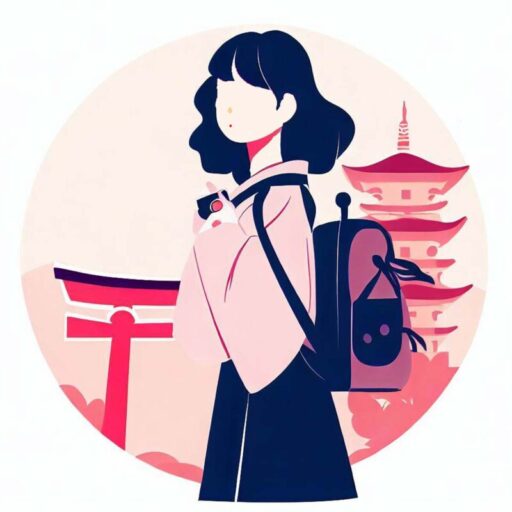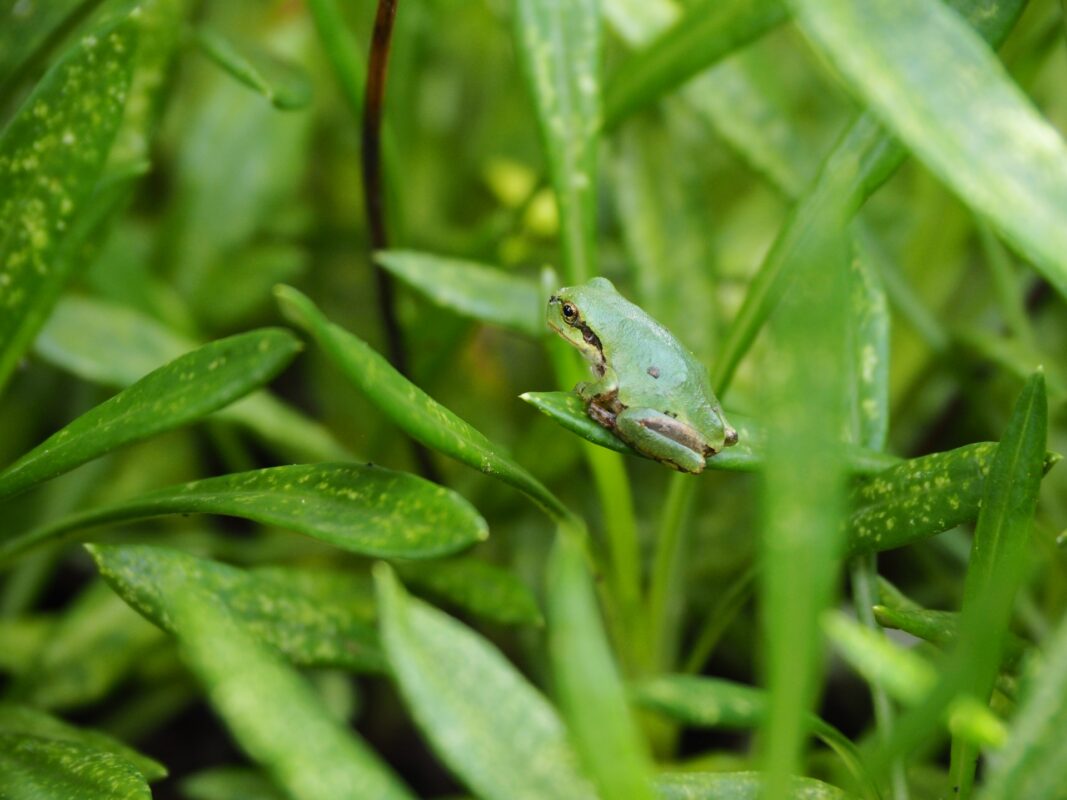The Japanese Nature and Traditions Taught by the Season of Kokū: The Customs and Charms of Japan’s Beautiful Four Seasons.

『 This article is… 』
This page provides rich information about the traditional Japanese season of “Kokū”. Travel writer Kasumi introduces the unique characteristics and customs associated with Kokū in various regions across Japan. Aimed at culture enthusiasts and travelers, it offers the benefit of discovering the unique landscapes and events that make one feel the four seasons of Japan. By reading, you can gain a deeper understanding of Japanese traditions and the beauty of nature, and find inspiration for your next journey.
Hello, I am Kasumi, a travel web writer. Having traveled all over Japan, this time I will focus on “Kokū” (Grain Rain), one of Japan’s twenty-four sekki (solar terms), and convey the beauty and deep meaning of this season. Kokū marks the end of spring and opens the door to early summer. I will introduce the customs, history, origins, and the transitions to the present, as well as the unique festivals and events in various regions of Japan, showcasing the richness of Japanese nature and culture. I will weave in the delicate changes of Kokū as felt from a woman’s perspective and heartwarming episodes from my travels, delivering the deep charm of the Kokū season. Let’s embark on a journey together to feel the end of spring and the beginning of early summer in Japan.
- Kokū – One of the Twenty-Four Sekki Coloring Japan’s Four Seasons
- Kokū’s Features – The Beauty of Season Weaved by Nature and Culture
- Kokū Customs and Modern Japanese Life
- Kokū and Japanese Nature – Seasonal Changes and Their Effects
- Kokū and Modern Society – The Fusion of Tradition and Innovation
- Summary and Thoughts
- Kasumi Points
Kokū – One of the Twenty-Four Sekki Coloring Japan’s Four Seasons
The Meaning and Historical Background of Kokū
Kokū is one of Japan’s traditional twenty-four sekki, symbolizing the end of spring. The name derives from the idea that crops are nourished by rain. Historically, as Japan has long been an agricultural society, Kokū has been an important season for crops. Its origin is in China, and it was introduced to Japan in the Nara period. The period of Kokū is around April 20th to May 5th every year, a crucial time for rapid plant growth and symbolically marking the end of spring and the beginning of early summer.
Regional Customs of Kokū
In various regions of Japan, there are various customs related to Kokū. For example, in Kyoto, there is a tradition of raising koi-nobori (carp streamers) during Kokū, wishing for the healthy growth of children. In Hirosaki City, Aomori Prefecture, the “Hirosaki Sakura Festival” is held in line with the Kokū period, celebrating the arrival of spring with beautiful cherry blossoms. These regional customs symbolize the blessings of nature brought by the Kokū season and the spirit of the Japanese people who celebrate it.
Kokū Today – Coexistence with Nature
In modern Japan, Kokū is not only important for agriculture but also serves as an opportunity to consider coexistence with nature. For example, in Nara Prefecture, where environmental conservation activities are vigorous, natural conservation activities in the region become more active during Kokū. Also, farmers sensitive to climate change tailor their farming methods to suit the crop growth conditions during the Kokū period. These activities show Japan’s attitude of preserving ancient traditions while also addressing modern environmental issues.
My Experience and Thoughts
During my visit to a small farming village in Yamagata Prefecture, the Kokū period was indeed a season where life thrived. People began preparing for rice planting and tilled the land and sowed seeds using traditional methods. Their faces reflected the philosophy of Japanese people who live in harmony with nature and cherish the change of seasons. I deeply felt the meaning of Kokū and realized the importance of respecting nature’s rhythm in our daily lives.
Kokū’s Features – The Beauty of Season Weaved by Nature and Culture
Meteorological Features and Natural Changes of Kokū
The Kokū season is a transitional period from spring to early summer. During this time, Japan experiences a warm and comfortable climate. Longer daylight hours promote plant growth. Notably, after the cherry blossoms fall, the season is known for its beautiful fresh greenery. Various flowers bloom across Japan during this period, filling the landscape with vibrant colors. For instance, Ezoyamazakura in Hokkaido and azaleas in Kyushu create beautiful sceneries.
Kokū and Japanese Agriculture
Kokū is also an important season for Japanese agriculture. During this period, seeding and rice planting are carried out, making it one of the busiest times of the year for farmers. As the name suggests, the moderate rain during this period is essential for crop growth, allowing people to directly feel nature’s blessings. Particularly in rice cultivation, the weather conditions during Kokū significantly affect the year’s harvest.
Kokū and Traditional Japanese Events
Kokū is deeply related to traditional Japanese culture and events. For example, in Tokyo, the “Sanja Matsuri” is held around Kokū, bustling with shrine festivals. In Fukuoka Prefecture, the “Hakata Dontaku Port Festival” is held, praying for the prosperity and safety of the region. These festivals are important opportunities to celebrate the richness of agriculture in the Kokū season and strengthen community bonds.
The Beauty of Kokū I Felt
Last year, during the Kokū period, I visited the Mino region in Gifu Prefecture. The area was impressive with lush mountains and the murmuring of clean rivers. Local people practiced rice planting using traditional methods, living in harmony with nature. I also observed the process of making “Mino Washi” (Japanese paper), realizing how Japanese traditional crafts align with the rhythm of nature. The Kokū season is a beautiful time in Japan, where the blessings of nature and culture beautifully merge.
Kokū Customs and Modern Japanese Life
Traditional Japanese Living as Seen in Kokū
The Kokū season is deeply connected to traditional Japanese living. During this period, rural areas see the peak of agricultural activities, such as rice planting and vegetable sowing. In homes, people adopt a diet conscious of Kokū, with seasonal vegetables and fish appearing on dining tables. For instance, bamboo shoots and wild vegetables, popular in the season of fresh greenery, are used in traditional Japanese dishes. The Kokū period is a precious time to live in tune with the season, directly feeling nature’s blessings.
The Significance of Kokū in Modern Japanese Society
In modern Japanese society, Kokū may have less direct impact on urban dwellers’ lives, but it serves as an opportunity to reacknowledge the connection with nature. For example, in urban households, starting home gardens or focusing on local produce during Kokū has become more common. Also, with the rise of environmental awareness, the Kokū season has become a good opportunity to think about the importance of nature conservation.
Activating Regional Communities through Kokū
The Kokū period sees many events and activities that strengthen the bonds of local communities. For example, in a region in Shizuoka Prefecture, a market featuring local agricultural products is held in line with Kokū, enhancing interactions between local residents and tourists. This not only promotes local specialties but also encourages community interaction and protects regional culture.
My Experience of Kokū Customs
During the Kokū period last year, I visited Matsuyama City in Ehime Prefecture. There, I had the opportunity to experience soy sauce making. At a local soy sauce brewery, I observed the process of making soy sauce based on traditional methods and was impressed by its rich aroma and flavor. I also cooked with local people using fresh local vegetables, experiencing the food culture unique to the Kokū season. These experiences let me feel the warmth of the Japanese community that cherishes nature’s blessings brought by Kokū.
Kokū and Japanese Nature – Seasonal Changes and Their Effects
Changes in Japan’s Natural Environment During Kokū
The Kokū period is a time of significant change in Japan’s nature. During this time, spring flowers across the country end their bloom, and the fresh greenery becomes more vivid. From Hokkaido to Okinawa, the latitude differences of the Japanese archipelago bring various natural changes in each region. For example, late-blooming cherry blossoms in Hokkaido and early summer flowers in Okinawa start blooming. These natural changes symbolize the beauty of Japan’s four seasons and show the close relationship between nature and people’s lives.
Impact of the Kokū Period on the Ecosystem
The Kokū period is also an important time for flora and fauna. During this season, many animals become more active, and plants reach their peak growth. For example, the increase in bird species makes more places suitable for bird watching. In the fresh green forests, a variety of plants grow competitively, letting us feel the richness of the ecosystem. These natural changes narrate that the Kokū period is an essential season for the ecosystem.
The Kokū Season and the Health of Japanese People
The Kokū season positively affects the health of Japanese people. Moderate humidity and temperature provide ideal conditions for outdoor activities like walking and jogging, contributing to health maintenance. Additionally, seasonal ingredients that come into season during this period are high in nutritional value, helping to heal spring fatigue and build strength for summer. For instance, fresh vegetables and fruits are rich in vitamins and minerals, helping to maintain good health.
My Connection with Kokū
My most memorable Kokū experience was hiking in the fresh greenery of Yoshino Mountain in Nara Prefecture. The day was calm and warm, with the entire mountain enveloped in green. As I walked along the hiking trail, enjoying the scent of the new greenery and the chirping of birds, I felt refreshed both mentally and physically in nature. The Kokū season is the ideal time to feel the healing and vitality provided by Japanese nature.
Kokū and Modern Society – The Fusion of Tradition and Innovation
Linking Kokū and Modern Technology
In modern Japan, the traditional sekki of Kokū is being utilized in new ways. Especially in the field of agricultural technology, climate data from the Kokū period is used to develop more efficient and sustainable farming methods. For example, in precision agriculture, the weather patterns of Kokū are analyzed to calculate the optimal amount of water and fertilizer for crop growth. This helps to conserve resources and reduce environmental impact.
Ecological Activities Utilizing Kokū
The season of Kokū is a crucial time for modern ecological activities that emphasize harmony with nature. Across Japan, tree-planting festivals and river cleaning activities are increasingly conducted in conjunction with Kokū. These activities breathe new life into the age-old concept of community-based environmental protection. Additionally, numerous environmental education programs themed around Kokū are available, providing a valuable opportunity to teach children about the importance of nature.
Incorporating Kokū into Modern Lifestyles
In the lifestyle of modern Japanese people, Kokū marks a period of transition, signaling the end of spring and the beginning of early summer. With the arrival of Kokū, many people perform wardrobe changes, signifying a fresh start for the new season. There is also a heightened awareness of health and beauty, leading to a revision of skincare and diet in line with the seasonal change. The natural rhythm of Kokū influences modern health management and beauty consciousness.
My Experience with Kokū and Modern Life
For me, the season of Kokū has always been a time to start new challenges. For instance, last year during Kokū, I ventured into developing recipes using local agricultural products. I also participated in a community tree-planting festival, which was an opportunity to re-realize the importance of nature conservation. Kokū plays a significant role in our lives, reminding us to respect tradition while incorporating new lifestyles and values.
Summary and Thoughts
Kokū, a traditional Japanese season, is more than just a part of the calendar; it is deeply rooted in our lives, culture, and nature. Throughout this series, we have explored the vital role Kokū plays in agriculture, nature, community, and modern society.
In our lives, Kokū is a crucial time marking the transition from spring to early summer. This seasonal change affects not only nature but also our minds and bodies. Kokū encourages us to live in harmony with natural rhythms and to appreciate the importance of sensing seasonal changes.
Furthermore, Kokū is deeply connected to Japanese traditional culture. Customs, festivals, and culinary practices related to Kokū demonstrate the cultural richness and community bonds of Japan. These traditions are still relevant today, forming a crucial part of the Japanese identity.
Through the season of Kokū, I have been deeply moved by the beauty of Japan’s nature and the endless possibilities brought by the changing seasons. I have learned the importance of living in tune with nature and being thankful for its blessings. As a traveling writer, meeting people and experiencing unique regional cultures during Kokū has profoundly impacted my life.
Kokū reminds us of the natural cycle, helping us rediscover the beauty of each season and the cultural richness of Japan. Through the changing seasons, we find hints on how to live in harmony with nature while preserving tradition and exploring new ways of life. I look forward to continuing to cherish the deep meaning and beauty that the season of Kokū brings.
Kasumi Points
Across Japan, there are various traditional cultures and characteristics associated with Kokū. Below are examples from different prefectures, explained as “Kasumi Points”:
Kyoto Prefecture – Carp Streamer Tradition
“Kasumi Point”: In Kyoto, during Kokū, there is a tradition of decorating carp streamers to wish for the healthy growth of children. The beauty of the carp streamers blending with the Kyoto scenery evokes the atmosphere of late spring.
Aomori Prefecture – Hirosaki Cherry Blossom Festival
“Kasumi Point”: In Hirosaki City, Aomori Prefecture, the “Hirosaki Cherry Blossom Festival” is held during Kokū. This festival, with its beautiful cherry blossoms, is a wonderful event that symbolizes the Japanese spring.
Nara Prefecture – Environmental Conservation Activities
“Kasumi Point”: In Nara Prefecture, environmental conservation activities become active around Kokū. These activities symbolize the fusion of traditional values and modern environmental consciousness in Japan.
Fukuoka Prefecture – Hakata Dontaku Port Festival
“Kasumi Point”: In Fukuoka Prefecture, the “Hakata Dontaku Port Festival” is held during Kokū. This festival, which prays for the prosperity and safety of the region, reflects the cultural identity of Fukuoka.
Yamagata Prefecture – Rural Traditional Events
“Kasumi Point”: In the rural areas of Yamagata Prefecture, Kokū marks the peak of agricultural activities, with rice planting and vegetable sowing. These traditional events beautifully demonstrate the spirit of harmony with nature at the core of Japan’s agricultural culture.
These “Kasumi Points” are excellent examples of how the season of Kokū is deeply ingrained in the culture and customs of various regions in Japan. Each area has its unique traditions and characteristics that are very much alive.








